A NYC Tenement Legacy Persists, Despite Gentrification
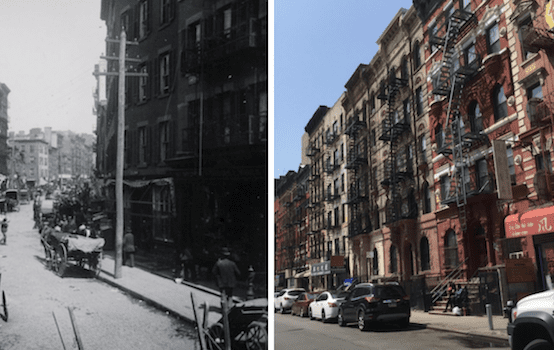
When Jacob Riis published How the Other Half Lives in 1890, New York City’s Lower East Side was the epicenter of American tenement life.
At one point, almost three hundred thousand people were packed into a square mile—a frightful and unprecedented urban density. Lack of sanitation contributed to frequent cholera epidemics. Poverty fed the growth of gangs. An endless stream of people, arriving from Europe, kept wages dismally low, and the resultant crowding kept rents extremely high. Newcomers had little clout to improve their lot. Victorian New York had a social hierarchy, and the Lower East Side was near its lowest rank.
The most extreme conditions that Riis describes have been eliminated in the 13 decades since his work was published. Stronger building codes, better infrastructure, and more than a century of urban planning efforts have combined to substantially raise the baseline of housing conditions in New York City. Poverty, of course, still exists. But many of the worst buildings have been torn down or repurposed for use at healthier densities. More than a century of additional growth has also pushed today’s epicenters of poverty to more distant geographic margins.
Today, the Lower East Side retains certain badges of its impoverished past. It remains, barely, a working-class neighborhood. A dwindling stock of low-rent apartments has been sheltered from market forces for decades by rent regulations. Twentieth century housing projects hug the dark banks of the East River. Families here hold onto apartments from generation to generation. Many of the old tenements that once instantiated the worst conditions remain standing and occupied in this complex, haunting neighborhood.
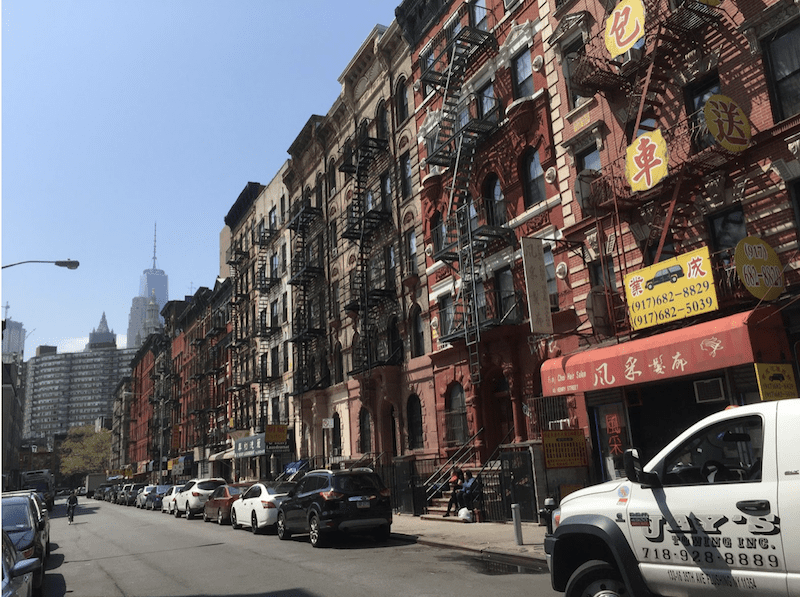
A scattering of mom-and-pop businesses has also survived. Disproportionately, these are shops with storied histories that bring tourists and mail-order trade. Russ and Daughters, which still does a nice business in caviar and smoked salmon, retains the look and feel of a century ago. Yonah Schimmel’s, founded the same year Riis’s book was published, does the same with knishes. Wo Hop, near Chatham Square, could be a cousin of the restaurant in Edward Hopper’s 1929 Chop Suey. But the neighborhood’s changing character is reaching a tipping point. Newcomers have brought soaring values. Real estate agencies are side-by-side with wholesale fabric stores. Neighborhood conditions reflect many walks of life, but vacancies are mostly limited to those with means.
To read Riis in 2018 is to travel in time. The 1890 neighborhood is long gone. But if one walks through the blocks he describes today, memories of his time can be found everywhere. Mott Street remains the heart of Chinatown—a community that has now grown to encompass many of the areas once occupied by European immigrants. Gotham Court, one of Riis’s worst examples of tenement blight, is long gone; but in its place stands an aging housing project that Riis’s reporting helped bring about. Orchard Street still has its fabric stores. The Eldridge Street Synagogue is now a cozy museum—but still has an active congregation.
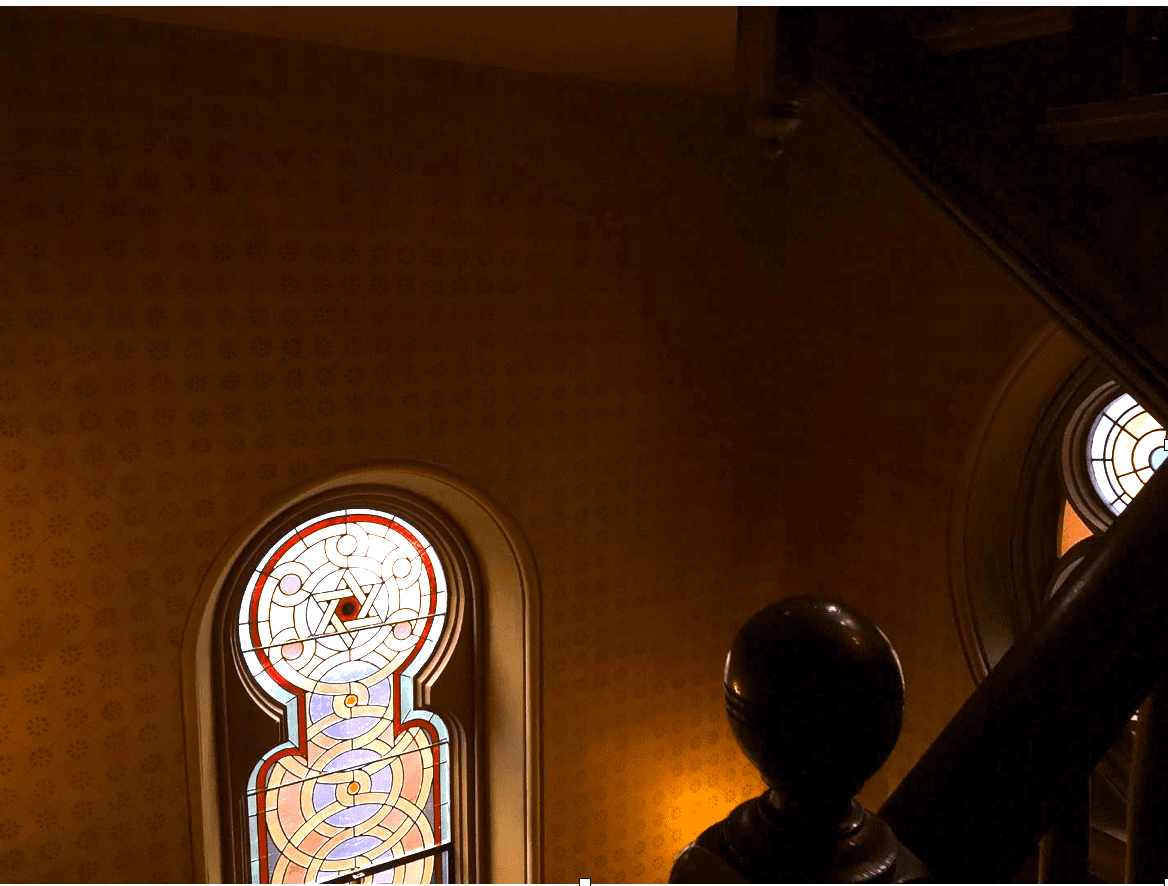
Unlike the tidy, geometrical streets that characterize Manhattan’s well-known gridiron, the world that Riis describes had grown up around the winding lanes and dark alleys of Lower Manhattan—an aging colonial seaport that had been transformed, through waves of change, into a cacophony of bricks and concrete. These streets have names, not numbers. They once had houses with yards, which were gradually replaced by tenements. The pattern of blocks is the product of haphazard subdivision, the platting of farms into neighborhoods, as the vagaries of history would have it. These patterns represent the growth of New York City before it was rationalized. In many ways, they reflect a more traditional, European approach to urbanism.
As one of the first writers to experiment with photojournalism, Riis combines striking pictures with his narrative, in language that varied from matter-of-fact descriptions of human nature to sensational accounts of filth and depravity. A native of Denmark, Riis struggled with poverty as an immigrant in New York City and throughout the Rust Belt for years before finding success as a writer—an experience that infuses his work with a rare degree of personal understanding. Here, with a photograph, is Riis’s description of the infamous Mulberry Street Bend: a salient example of what had gone wrong with urban development in America during the late Victorian period:
Around “the Bend” cluster the bulk of the tenements that are stamped as altogether bad, even by the optimists of the Health Department. Incessant raids cannot keep down the crowds that make them their home. In the scores of back alleys, of stable lanes and hidden byways, of which the rent collector alone can keep track, they share such shelter as the ramshackle structures afford with every kind of abomination rifled from the dumps and ash-barrels of the city.
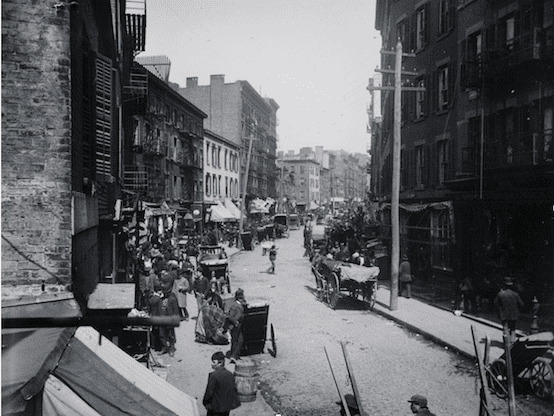
Intertwined with dysfunctional urbanism is what Riis sees as a more extensive pattern of jading experiences that twist the values of the individuals they shape. Customs, he seems to argue, are formed not only by adherence to long traditions, but also by how people react, through trial and error, to immediate circumstances. Riis describes this nexus with foreboding, but also with humor. In a chapter shadily titled, “The Harvest of Tares,” he describes an encounter that led to a series of photographs of members of a notorious street gang:
They were not old and wary enough to be shy of the photographer, whose acquaintance they usually first make in handcuffs and the grip of a policeman; or their vanity overcame their caution. It is entirely in keeping with the tough’s character that he should love of all things to pose before a photographer, and the ambition is usually the stronger the more repulsive the tough. These were of that sort, and accepted the offer with great readiness, dragging into their group a disreputable-looking sheep that roamed about with them (the slaughter-houses were close at hand) as one of the band. The homeliest ruffian of the lot, who insisted on being taken with the growler to his “mug,” took the opportunity to pour what was left in it down his throat and this caused a brief unpleasantness, but otherwise the performance was a success. While I was getting the camera ready, I threw out a vague suggestion of cigarette-pictures, and it took root at once. Nothing would do then but that I must take the boldest spirits of the company “in character.” (180-182)
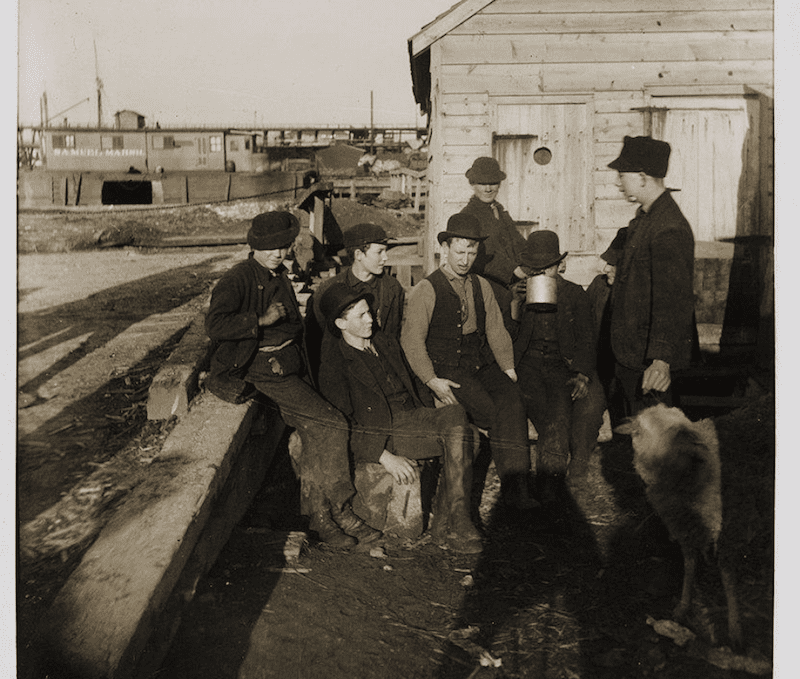
Flickr
Riis’s descriptions of his subjects are generally humane, but his casual recitations of ethnic and religious stereotypes would be too offensive to pass muster with a reputable publisher today. And yet, there is something clarifying about seeing such notions put down in black and white. One sees in Riis’s half-baked racial theories how certain stereotypes were frankly presented before doing so became taboo, and one even hears echoes of Herodotus and Aristotle in his attempts to discern an entire people’s character from its historical geography. The reader is reminded how conventional wisdom is a moving target; how writers, even well-meaning ones, ought to keep this in mind.
The most significant aspect of Riis’s work, though, is not its depiction of the forms of industrial urbanism, per se, nor its dated prejudices, nor even its occasional dark humor. Its salient contribution is a stark documentation of the uncivilized living conditions that had taken hold in New York City during this outwardly prim and fastidious era. In every wave of rapid change, customs and laws lag the cutting edge of transformation. But few times have manifested the inadequacy of traditional norms to address what was new more dramatically than the late 19th century.
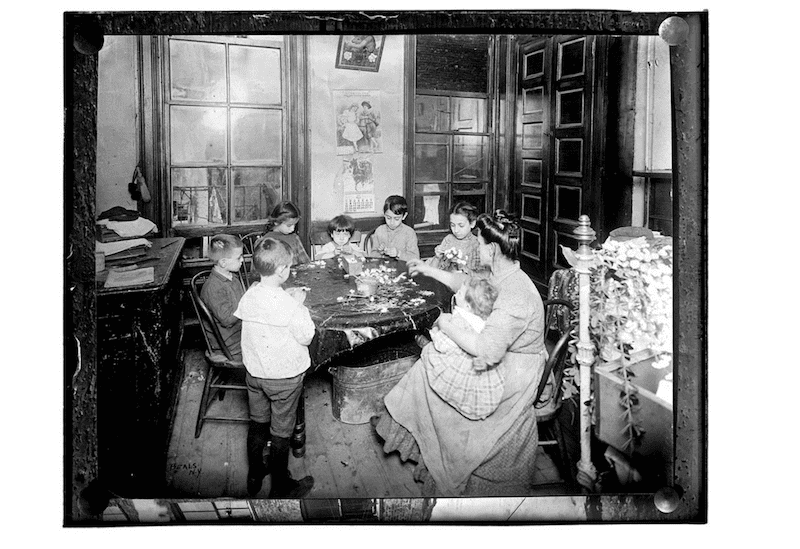
Common-law doctrines that had evolved over centuries in agrarian societies were unable to temper the unprecedented poverty, pollution, and density of the industrial age. The consequences were not only (or even primarily) aesthetic, but human. In a society that saw itself as being both scientific and Christian, growing numbers of citizens were daily reduced to contending with the filth and chaos that modern industry had spawned. The benefits of Western knowledge and mores did not accrue to the urban poor.
Riis’s pictures and descriptions of squalid living conditions in one of the world’s wealthiest cities are his most powerful legacy; and perhaps the absence of the worst of those conditions in today’s Lower East Side is partly his legacy, as well. His depictions helped force New Yorkers and other Americans to acknowledge the chronic failures of industrial urbanism, and to begin to look for solutions from all angles. Radicals, reformists, and conservatives all had ideas: the point was to focus attention.
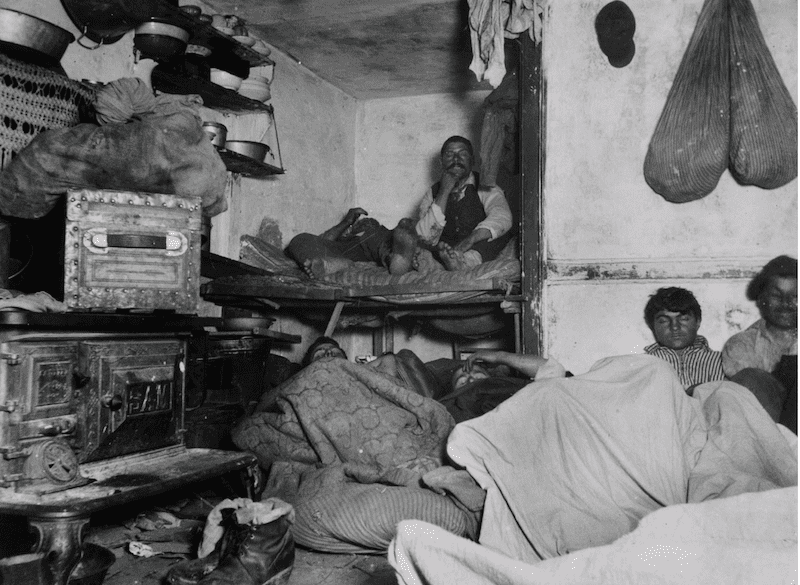
Today, one can see tangible improvements, made over 13 decades, on the streets of the Lower East Side. Gone are the extreme crowding, the admixture of absolute poverty and industrial pollution, the lack of basic sanitation. Over the last two decades, the neighborhood has grown stable enough that people with means have zeroed in on its convenience and curiosities and have begun the familiar process of transforming it into a destination of choice, for those who have choices.
Yet one must also acknowledge that the changes to the Lower East Side are largely a result of the world’s economic geography. Today’s industrial urbanism is not found in the narrow Victorian streets of Lower Manhattan, but in far-flung sprawling neighborhoods where no spotlight is focused, where undocumented immigrants work “off the books” and property-less Americans hustle in Amazon warehouses. Even more, it exists in the faraway cities of Asia and Latin America. If there is an abiding message in Riis’s work, it is to look closely where the smart crowd refuses to look. That is where one will find the contradictions between a society’s ideals and its priorities.
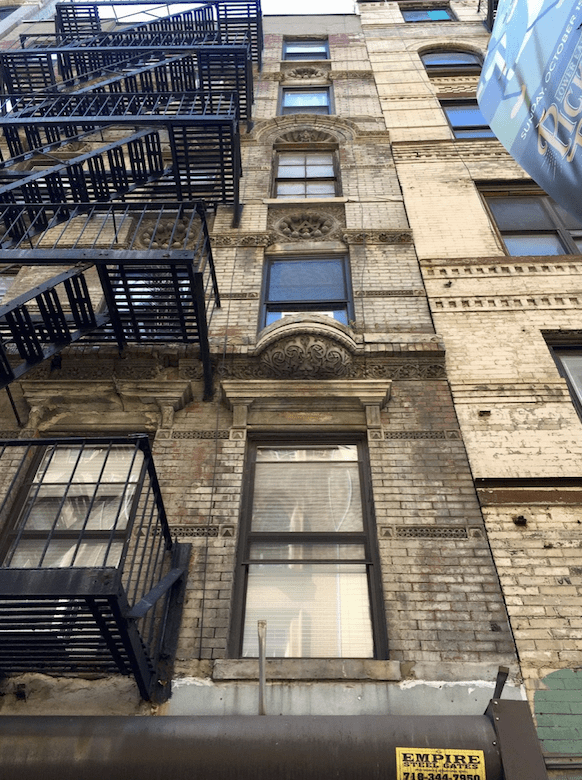
Theo Mackey Pollack practices law in New Jersey, and is a consultant on urban-planning projects, including Hurricane Sandy recovery. He blogs at legaltowns.com.